During the Japanese-American internment of 1942-1946, there arose a style of art that drew from elements and techniques of Western and traditional Japanese forms. Through a closer look at these works of art, Japanese-American internment art can serve to reflect the internees’ cultural, social, and political resilience while also allowing us to study the forms of expression that are common to the human soul in trying times.
 Between February 19, 1942 and March 20, 1946, approximately 120,000 Japanese Americans were interned in the wake of the Second World War.[1] This was a controversial and shameful episode in our history that was met with a mixture of explicit and implicit rebellion from the part of the internees who were urged away from their homes on mere grounds of ethnicity. The few explicit forms of protest that did take place demonstrated that some brave individuals such as Fred Korematsu or those involved in the Poston Strike of 1942 would not allow threats of punishment to stop them from standing up for their rights as American citizens. Yet, these acts of defiance were limited in number; fear of apprehension and separation from their families was a strong reason for many internees to abstain from direct protest. Beyond the important questions that this episode revealed relating to our nation’s politics, this instance of ethnic internment opens up discussions on two passionate topics: Art, and patriotism, for the two are more related than it might initially seem.
Between February 19, 1942 and March 20, 1946, approximately 120,000 Japanese Americans were interned in the wake of the Second World War.[1] This was a controversial and shameful episode in our history that was met with a mixture of explicit and implicit rebellion from the part of the internees who were urged away from their homes on mere grounds of ethnicity. The few explicit forms of protest that did take place demonstrated that some brave individuals such as Fred Korematsu or those involved in the Poston Strike of 1942 would not allow threats of punishment to stop them from standing up for their rights as American citizens. Yet, these acts of defiance were limited in number; fear of apprehension and separation from their families was a strong reason for many internees to abstain from direct protest. Beyond the important questions that this episode revealed relating to our nation’s politics, this instance of ethnic internment opens up discussions on two passionate topics: Art, and patriotism, for the two are more related than it might initially seem.
In the American context, some of the greatest acts of patriotism have come from members of repressed ethnic groups, fighting for their nation and loving it regardless. We might call to mind the black regiments of the Civil War union army, the Indian Scouts in the U.S. cavalry in the Indian wars, and the Japanese American 442nd Infantry in WWII. But patriotism is not only demonstrated through military service. All of these groups, it goes without saying, have contributed to our nation’s history through enduring, artistic creations that have become as American—to use the apt metaphor for this essay—as apple pie: The ingredients originated from various other parts of the world, but came together in their unique form through a combination of cultures and confectionery creativity.[2]
A recurring question during the internment of Japanese Americans posited that immigrants and their descendants had a stronger “allegiance” (though the word is politically inflated) to one country over the other: The more recent the immigrant, the more likely was his allegiance to his birth nation. Is there a gradual shift in patriotism? Is it possible to be patriotic to more than one nation? The questions are personal, since it is one that the multicultural citizen never quite settles, it only fades away with the passing of generations, such is one of the sacrifices of immigration; to lose a part of yourself. Fortunately, this estrangement comes not all at once, and the lover of history can revert to past and existing examples of his cultures to be connected to his heritage—adopted or ethnic.
Exploring this question beckons a reinterpretation of patriotism beyond the military service we intuitively envision. For the purposes of this essay, I want to focus on art as a form of national expression, albeit a more critical one. Art, as patriotism, is an outpouring of a nation’s—and therefore a society’s—culture. How our history, traditions, philosophy, and faith have been inculcated in us is revealed in our love of our country and in our visual, lyrical, and musical representation of ourselves. A representation of ourselves, no matter how individual and personal, is influenced by our sense of “home,” after all. We are shaped by our physical surroundings and our familial surroundings; here is a point of instability and oftentimes discord for people born or living in the U.S. while being raised in a home with a predominantly foreign culture. The imagination of a multicultural citizen finds unique appropriation in the art of both these cultures and all of their differences. Now back to our case study.
Internment left scars within Japanese Americans, stirring hostility and controversy between them: Internment not only shattered the Japanese-American community as a whole by dividing them between those who wanted to protest against their internment and those who wanted to wait out the storm. In a more personal way, it also severed the ties of the family unit since many Nisei (American-born children of Japanese parents) tried to distance themselves from their Issei relatives (Japanese-born immigrants) in attempts to become more “American.” For the Japanese Americans who witnessed the direct punishments of those people who protested through strikes and the indirect consequences that internment was having on families and their communities, it became clear that direct protest was unbeneficial. As a result, most Japanese Americans handled their internment in silence. Of course, silence is but a verbal closure of emotion that must, sooner or later, emerge elsewhere.
In these very relocation centers emerged a more peaceful form of protest through the medium of art. Art came into the camps as a simple effort to improve and liven up the internee’s living conditions by providing them with a way to furnish and decorate their homes, but it quickly evolved into an artistic movement of its own.[3] This art drew from elements and techniques of Western art and traditional Japanese art, which further solidified the notion that many Japanese Americans identified with their American and Japanese cultures. Through a closer look at these works of art, aided by knowledge of the political and historical background that shaped their creation, Japanese-American internment art can serve to reflect the internees’ cultural, social, and political resilience while also studying the forms of expression that are common to the human soul in trying times.
Interpreting the artwork produced by internees prompts an understanding of the race relations and of the social state of Japanese immigrants, including Japanese Americans, who were living in the United States prior to internment. When Japan attacked Pearl Harbor on December 7, 1941, the United States War Department rounded up and imprisoned any and all people of Japanese heritage. Relocation began just a few months after the attack, and on February 19, 1942 President Franklin D. Roosevelt signed Executive Order 9066, granting the military and War Department the authority to exclude “any and all persons, as deemed necessary or desirable, from prescribed military areas.”[4] Prior to internment and prior to World War II there already existed a strong anti-Asian faction and anti-Japanese bias, particularly along the West Coast. From as early as 1913, the federal government passed the Alien Land Act, which prevented Japanese immigrants from owning land in California, and only a couple of years later they passed the Japanese Exclusion Act of 1924 that closed off all immigration from Japan into the United States.[5] On their journeys to the relocation centers, internees faced uncertainty and insecurity, which was a theme often depicted in their art.
Chiura Obata demonstrated the social consequences of internment all while simultaneously capturing the internee’s experience in the Tanforan relocation center, where he was interned himself. A painting of the same name—Tanforan—depicts evacuees arriving at Tanforan for the first time: They are carrying everything they own on their backs as they make their way into the camp to quickly find a shed to settle in and to take shelter from the elements.[6] Obata’s piece is an example of the East Asian painting technique known in English as ink washing, Sumi-e in Japanese. In the Japanese tradition, the art of brush painting lies in its underlying philosophy: It aims to depict the spirit rather than the actual visual appearance of the object painted.[7] In light of this fact, the sketches and paintings done in Sumi-e style are revealed as being more than a mere recreation of the relocation centers; they become an attempt to paint the spirit of the internees. The artist’s use of downward brush stokes emphasize heaviness, reiterated by the darker patches of ink concentrated on the floor, previously trodden footsteps that have been continuously ingrained.
Another painting, Mother in Jerome Camp, combines elements of a traditional portrait study of a person where the painter tries to capture the features of his study, but what is interesting is the background that the artist chose for this particular portrait: Behind Sugimoto’s mother is a framed American flag along with the letter “V”; there is also a picture frame on a shelf that shows a standing soldier; the other noticeable object is what appears to be a pillow with a word written on it, “division.”[8] Mother in Jerome Camp is currently on display at the Japanese American National Museum, and the caption hanging under the painting informs the viewer that the “V” in the one picture stands for victory, because the soldier in the picture frame beside it is actually her son, Ralph, who was serving with the Nisei 442nd Regiment Combat team overseas, which also explains the significance of the pillow.[9] By including these elements, the painter is reminding his viewer that the person that he is painting is not only a real person (his mother), but that she is American and proud of her son and country.
Hisako Hibi was another painter who addressed the topic of internment in a way that criticized it but that still managed to depict the topic in a colorful and vivid way (her paintings are a personal favorite, and I recommend a brief pause to view her artwork online). Prior to internment, Hibi was a student at the California School of Fine Arts studying Western-style oil painting, but she was sent to Topaz relocation center. There in Topaz, she met Chiura Obata, studied under him, and helped him run an art school.[10] Hibi focused most of her art in capturing the internee’s experience by painting scenes that showed quotidian tasks such as mothers bathing their children or people walking around Topaz camp.[11] Hibi’s art highlights the commonplace and the mundane, but she adds another element. Nature is a strong and present force in Hibi’s landscape paintings.
In the pieces, Western Sky and Windy, Hibi is emphasizing the power that nature’s elements had over many of the internees.[12] In most of her paintings, Hibi manages to depict one or two people standing amidst the elements of nature while still granting a large part of her canvas space to the sky. Her pieces strongly visualize the smallness of man against nature by capturing a large sky and distant mountains. The power of nature over man was a common theme in 19th century Romantic art, but Hibi introduces her own interpretation of this concept of nature from the perspective of an Issei woman who lived during internment. The technique that Hibi uses in her oil painting along with the proportions that she gives man amidst his backdrop is similar to Wanderer Above a Sea of Fog by Casper David Friedrich, an iconic painting of Romantic art. Both artists utilize nature as a way to inspire awe. The missing factor, however, that permits the wanderer to experience such sublime nature is his freedom; what the men in Western Sky lack. Hibi provides a less romantic reality in an otherwise romantic-looking painting: The man she paints, though he may be looking up at the sky or living amidst wondrous mountains, is still confined.
The final painting in this essay will take us back to Chiura Obata and what is probably his most famous painting, Moonlight Over Topaz, which was commissioned by Eleanor Roosevelt and presented as a gift for Franklin D. Roosevelt when the First Lady received representatives of the Japanese American Citizens League at the White House in May 1943.[13] In his painting, Obata also depicts the beauty of nature juxtaposed with the presence of the barracks and barbed wire fences that imprisoned internees. While Obata’s painting is one that evokes peace, it also begins to convey desolation the longer you stare in it. There are no people in the landscape to heighten this sense of desolation, however, which was likely done intentionally since the painting was supposed to be a token of Japanese loyalty to the United States and could therefore not predict anything too controversial that would transmit a message of unhappiness of disapproval about their living condition. Obata manages to capture an emptiness below the horizon that dissipates and fades away as the viewer’s gaze moves upwards, away from what is immediately in front of him, perhaps only for some difficult time, and up at what will always be there to console and inspire.
The mountains in the background of Topaz Relocation Center are significantly larger than the barracks and the guard watchtowers that kept an eye on internees. Topaz camp is insignificant in this painting, and the mountains are the strongest force. By having the mountains high above the security towers, which are symbolic depictions of the WRA and its power over the Japanese-Americans, Obata is reminding the viewers that the mountains are even greater than security towers. As a diplomatic gift, Obata’s piece is a beautiful representation of the scenery of Topaz in Utah, but after taking into consideration his reasons for starting art schools in the Topaz and in Tanforan camps, as well as remembering his own internment, his painting becomes something more complex, something more difficult. In this case, however, the context is not necessary to interpret this same sense of frustration—it’s all there in the painting.
Of all the painting discussed, only one had an overt “patriotic” message; yet, all of the painters blended western and eastern painting techniques to produce their art. Most of the time, this blending of traditions and cultures, whether in art or any other form of personal expression, is not done intentionally; the multicultural citizen does not always realize when he is pulling from one tradition or the other. A cultural renewal of patriotism goes hand in glove with art, be it literary, visual, or musical, precisely because it does not feel forced or synthetic; rather, it is felt and grown. The lasting impression that these paintings leave on the viewer serve as a reminder of the importance of creating and maintaining our national culture that has such a strong emotional, artistic impact on its citizens that it allows space for individual creation and re-creation—this is a form of American and western freedom that is equally important to political freedom if we seek to form lasting reminders of the value of liberty, since only through a free society are we able to exalt our creative spirits to convey the human experience in all of its complexity, universality, and beauty.
The Imaginative Conservative applies the principle of appreciation to the discussion of culture and politics—we approach dialogue with magnanimity rather than with mere civility. Will you help us remain a refreshing oasis in the increasingly contentious arena of modern discourse? Please consider donating now.
Bibliography:
Hibi, Hisako, and Ibuki H. Lee. Peaceful Painter: Memoirs of an Issei Woman Artist. Berkeley, CA: Heyday Books, 2004.
Hirasuna, Delphine, and Kit Hinrichs. The Art of Gaman: Arts and Crafts from the Japanese American Internment Camps, 1942-1946. Berkeley, CA: Ten Speed Press, 2005.
Jaranson, Carla. “What is Sumi-e?” Sumi-e Society of America.
Obata, Chiura, and Kimi Kodani. Hill. Chiura Obata’s Topaz Moon: Art of the Internment Camps. Berkeley, Calif: Heyday Books, 2000.
“Beauty Behind Barbed Wire: The Relocation Camp Experience of Estelle Ishigo.” UCLA Institute on Primary Resources – Madeline Antilla’s Lesson Plan.
Notes:
[1] Delphine Hirasuna and Kit Hinrichs, The Art of Gaman: Arts and Crafts from the Japanese American Internment Camps, 1942-1946, (Berkeley, CA: Ten Speed Press, 2005) 5.
[2] Kimberly Kohatsu, “Why Are We ‘As American As Apple Pie’?” Huffpost, December 6, 2017.
[3] Hirasuna and Hinrichs, The Art of Gaman, Introduction.
[4] Ibid, 13.
[5] Ibid, 12.
[6] Tanforan, Chiura Obata, April 30, 1942, Sumi-e on Paper, From, Topaz Moon: Chiura Obata’s Art of the Internment.
[7] “What is Sumi-e?” Sumi-e Society of America.
[8] Mother in Jerome Camp, Henry Sugimoto, 1943, Oil Paint.
[9] Hirasuna, The Art of Gaman, 42.
[10] Hisako Hibi and Ibuki H. Lee. Peaceful Painter: Memoirs of an Issei Woman Artist. (Berkeley, CA: Heyday Books, 2004) 1-10.
[11] Hibi, Peaceful Painter, 38.
[12] Western Sky, Hisako Hibi, July 1945, Oil on Canvas; Windy, Hisako Hibi, February 1944, Oil on Canvas.
[13] Moonlight Over Topaz, Chiura Obata, 1942, Watercolor on Silk.
The featured image is a photo from a Japanese-American internment camp (5 April 1942) and is in the public domain, courtesy of Wikimedia Commons.


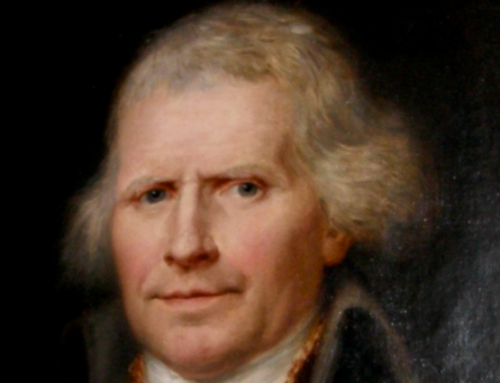
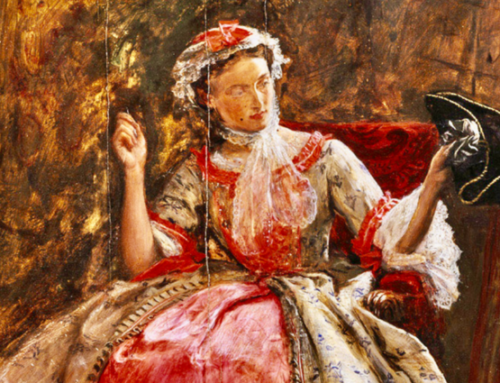
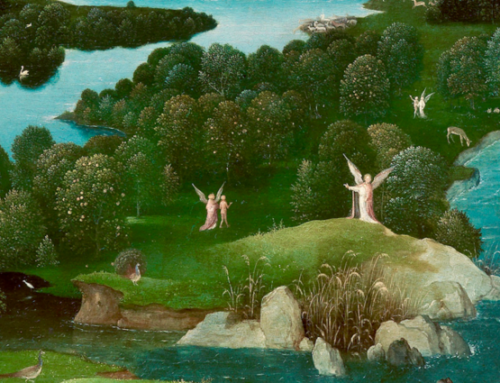
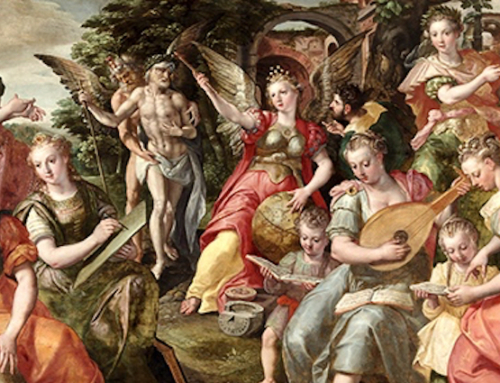
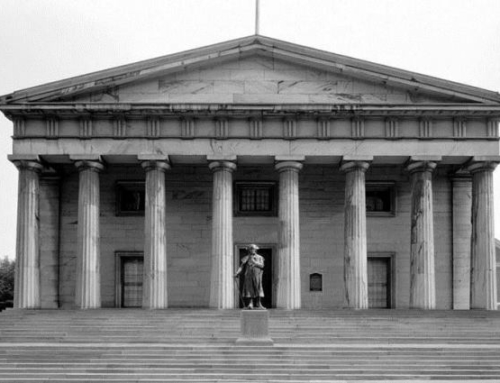
Leave A Comment